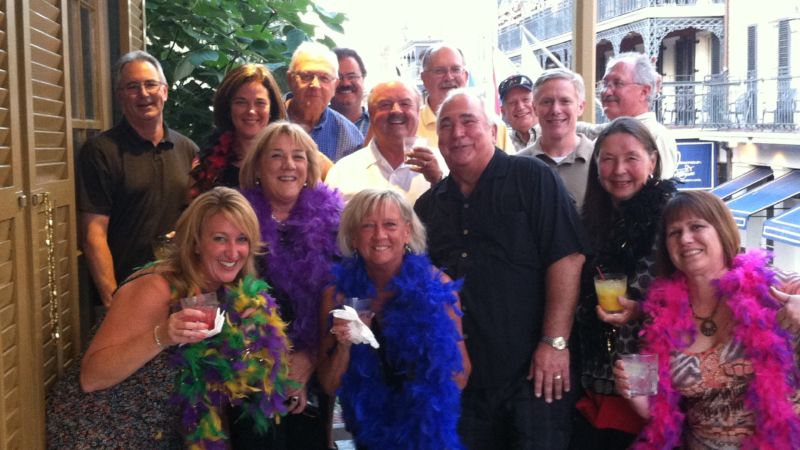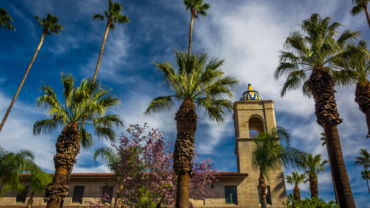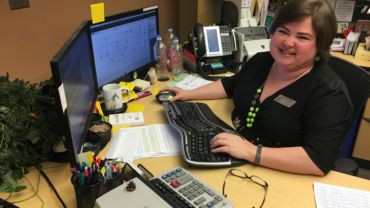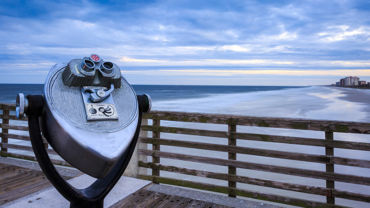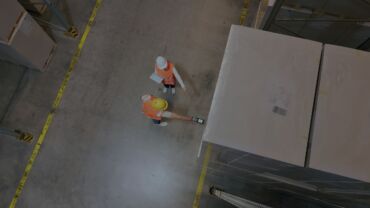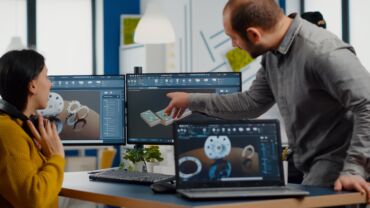When English colonist first landed at Cape Henry in 1607, it’s no surprise that the lush Virginia Beach area seemed like an idyllic place to settle after an arduous journey across the Atlantic. More than 400 years later, “America’s First Region” is still alluring.
Only today, the City of Virginia Beach is an unusual hybrid of popular vacation destination, strategic military stronghold, and suburban community with a large section of rural agricultural real estate that extends to the North Carolina line. Although it’s the largest city in the state of Virginia, it doesn’t fall under the jurisdiction of a county government. Instead, it functions as an independent city and operates as a political subdivision of the state.
As assistant real estate assessor, Ron Agnor has been an integral part of the community for more than a decade. Before that, he spent 12 years as the deputy assessor and assessor for the nearby City of Hampton. Throughout it all, he’s been a trail-blazer akin to the Cape Henry crew — a go-to guy for colleagues and peers across the country who is known for his enviable knowledge and championing improvements to advance the industry. In fact, the SYNERGY Aumentum User Groups Conference traces its roots back to Agnor’s knack for bringing people together and putting on memorable conferences that have seen some wildly productive and fun times.
You were one of the first organizers of user communities in the mid-90s — specifically the ProVal group. What was your inspiration?
I’d been on a MAC since 1980 or 1981 — before hard drives and DOS. I used them for doing cash flow projections for investment real estate. Then Windows came out when I was working as the deputy assessor for the City of Hampton, a jurisdiction that had been using a mainframe. I thought, “Hey, there’s a Windows computer-assisted mass appraisal system that looks really cool.” There weren’t many people in our office who even used PCs, but even those who did were using DOS and didn’t really understand the importance of Windows at the time. I had just bought a Windows computer for home, and when I saw that ProVal had a system, I talked to my boss and said this is something we ought to consider. And we did — even without our IT department, which still had a mainframe mentality.
The City of Hampton had an innovation fund, so I wrote up a 30-page proposal and asked for $100,000. My boss said, “They’re not going to give us the money, but let’s send it in.” They did give us the $100,000 though, and I thought, “Oh, my, now I have to make this happen.” With the grant, we were able to interface with the mainframe system to take care of all our programs. We don’t have caps in Virginia on value — we’re 100 percent of market value with annual reassessments — but we do have programs for the elderly, disabled, and veterans to help them with their taxes. My staff and I were able to install the ProVal system ourselves — even the networking required — and interface successfully with the mainframe to produce an annual assessment roll called a Landbook in Virginia.
At that time, we were making a lot of changes to the software. The software was more of a cost system. We needed market and income-approach modules developed, along with a lot of other things. And then in 1996, I happened to be invited to the ProVal headquarters by owner Wayne Moore. He invited seven of us to Springfield, Ohio. ProVal was really beginning to sell because he was listening to his customers. But everybody wanted something different, so he was trying to develop a leadership team to get consensus on what ProVal should look like and what it should do. He had a good cost system, but he needed other things: market approach, income approach, condo modeling, among other things. We spent a whole week working and networking. There were users from Western Canada to Virginia representing most regions of the country. So, I’ve got to hand it to Wayne Moore because he really started the user group, although we laugh that he didn’t really know what he was creating at the time.
After we met, the seven of us (three who are still on our board) just picked up on the idea. The developers liked our ideas, so we just decided to do meet again. We realized we didn’t need Wayne Moore to bring us together. The next time we got together, we met in Virginia Beach six months later in 1997. We brought about 25 people in from across the country. Wayne Moore came on the last day and we submitted all of our ideas to him. At that point, we elected officers and decided that we wanted to grow and hold conferences — and so we did. We held our first conference in 1998, and it just grew over the years. We got a lot of things done. If companies are willing to listen to the users, it benefits both sides and that’s why we continue operating.
As the long-time president of the user community, you’ve been very influential in what the SYNERGY Aumentum User Groups Conference looks like today. What drove your involvement?
At our first conference everybody said, “This is really good.” So, I just kept doing it — nobody else would do it, but our executive board and users from across the country were willing to teach and present case studies. It did require a lot of my time, but there were a lot of people involved and we couldn’t have done it without them. My job was to hold the board meetings, decide where we were going to be the next year, and make all the financial commitments. One of the things I learned early was that you don’t necessarily have to go where the users are. Go where they want to be. If you go where they want to be, you’ll get more people to come to the conference. I believe this year will be our 19th conference. Over the years, we have made a difference. There’s a lot of product out there now, and the user group has had a huge impact on the development of the software. It doesn’t look anything like it did in 1995.
How has the interaction with the community created a robust exchange of ideas?
The user group has evolved. When we first started it was just ProVal. But I’ll be honest with you, without ProVal we couldn’t do what we do today — it was so manual before that. And the user community helped get ProVal in pretty good shape. Being able to talk to each other and have the company listen to us and then take action has been important. It’s really hard for a company to listen to everyone who uses the software, you’ve got to have a funnel — and that’s how we’ve made an impact.
Right now, the big thing is mobile and apps. Things change so fast it’s hard to keep up, but when you’re dealing with other people who are doing the same thing, it’s very helpful. It doesn’t matter if they’re in a different state, a different city or they serve townships or school districts — the process for an assessor is still the same. I can’t speak for collectors, but for an assessor, the appraisal process has changed very little over the years. The tools that are now available to us have changed dramatically — allowing us to produce better quality work and operate more efficiently. So, I know our efforts to address these and other issues have been very beneficial to the jurisdictions and community.
What impact do you think you’ve had on your profession?
I guess just keeping the user group together all these years. We began so we could consolidate our ideas and give them to the company and say, “This is what we want.” But then it became more about training because things were changing so fast. If I can say that I helped facilitate that, that’s a pretty good thing because we’re talking about training people in 30-something states. We still do it today, and a special bond exists between the founding members and users across the country. We put on our own education tracks. That’s something I’m glad I was involved in. I don’t have to do as much work now as when I had to choose conference locations and negotiate with the hotels. It was a learning process for me and I’m proud of that, but now Thomson Reuters has their own division for events and that works out fine for us. Our board’s been around a long time. We don’t know everything, we still want to hear what other people are doing.
Have you formed some lifelong friendships through the user community?
I know people in nearly every state. I feel blessed to be able to pick up the phone, call a friend and bounce around an idea. I think we all feel comfortable calling each other and saying, “Will you brainstorm with me?” It could be about an integration issue, it could be an appraisal issue, it could be a lot of things. Yes, I’ve made some great friends. I’ve even visited some of them in their home state on my own time.
What do you still look forward to at SYNERGY each year?
The location. It looks like Fort Worth is a good location, and I’m looking forward to it. This year, I’m looking forward to seeing what the plan is to bring people who are using the ProVal appraisal module into Aumentum Valuation. That’s something I want to learn more about. How are we going to move ahead? We have a lot of ProVal users out there, and some of them are integrated like us and some aren’t, so I’m looking forward to seeing what the plan is to bring us all along.
What funny stories can you share about past SYNERGY conferences?
I sent this question to a couple of people on my board and they had all kinds of answers. The ones I’ve got, I’m not going to tell. We don’t see each other very often, so when we do we like to have a good time — and we do. It’s like the Vegas campaign, what happens at SYNERGY stays at SYNERGY. But we always bring back the knowledge we’ve gained during the conference to our offices so we can improve our processes and better serve our communities.
